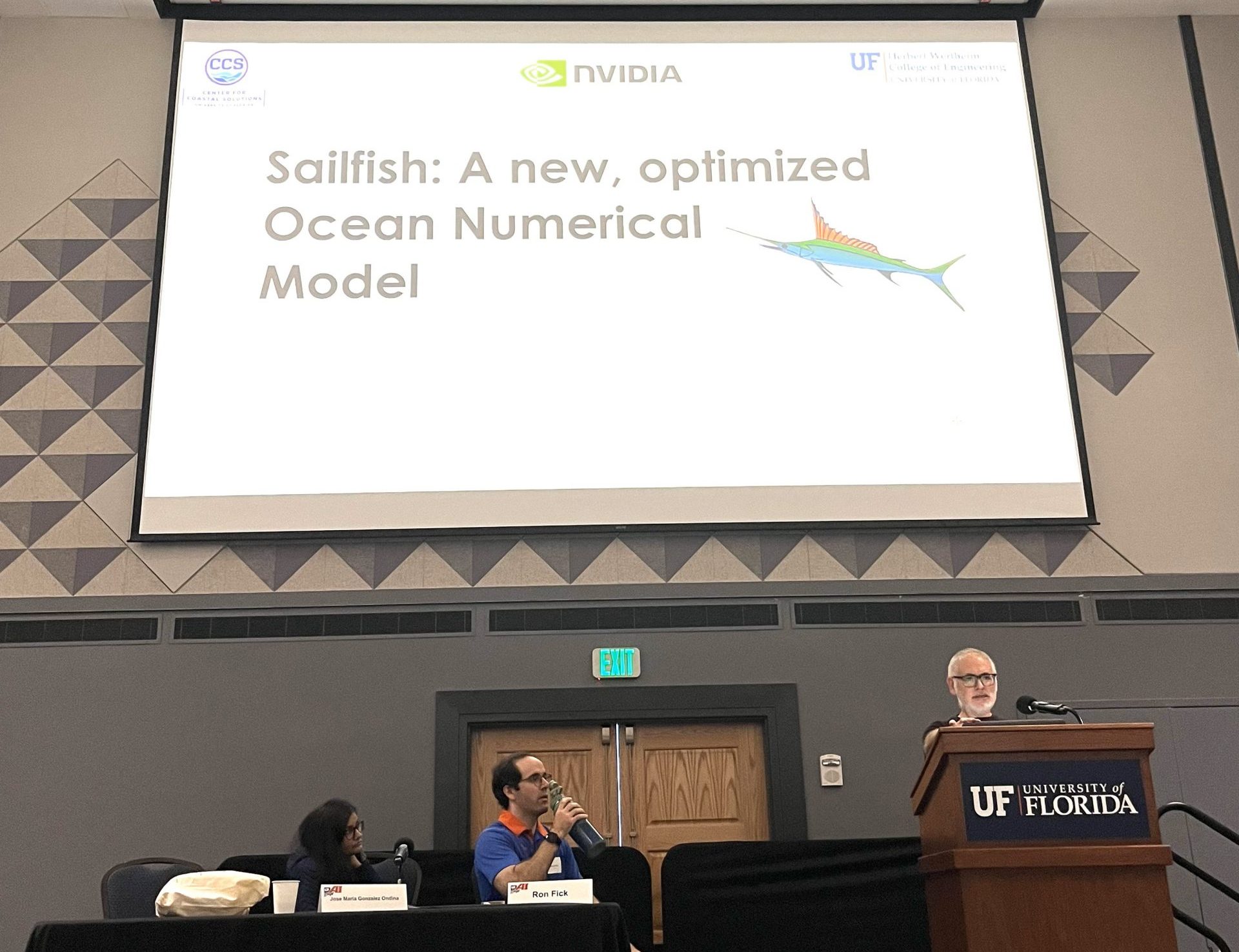During UF AI Days from October 16-20, CCS researchers shared success stories in using artificial intelligence to enhance the speed and accuracy of water quality monitoring and coastal modeling. Associate Research Scientist Ron Fick, Ph.D. who co-led a panel on AI-driven advances in diverse fields, described the development of a new algorithm that fuses satellite data and field samples for remote detection of red tide with unprecedented accuracy.

Current water quality monitoring practices are often done on-site, which can be a time-consuming and costly method. The samples collected at specific locations using this method have limited spatial coverage, restricting researchers’ understanding of water quality hazards and their interactions with the environment. Fick’s algorithm bridges this gap by merging in-situ samples with satellite data to create spatially detailed maps of red tide.
This enhanced capability, which integrates current-day satellite images with in-situ samples from the recent past, enables scientists to reconstruct historical events to determine the drivers, evolution and dissipation of harmful algal blooms. As the team continues to improve the accuracy of these algorithms, they will be able to produce higher quality forecasts of future blooms of red tide and other harmful algal blooms. This technology could be used to inform the development of next generation early warning systems.
“Understanding these dynamics over time is not possible with only grab samples,” said Fick. “Higher resolution achieved by AI-driven data fusion is vital.”

Ocean modeling is another field benefiting from advances in AI, according to CCS Research Assistant Scientist Jose Maria Gonzalez Ondina, Ph.D., who introduced participants to “Sailfish”, a cutting-edge ocean numerical model optimized to represent physical ocean processes and predict future events, like temperature and salinity, faster and with a much lower energy footprint than the current widely used Regional Ocean Modeling System (ROMS). Sailfish’s use of modern programming language Python increases the model’s accessibility to a wider range of programmers. The model will also be able to simulate multiple scenarios at faster speeds than the original ROMS.
“Preliminary estimates show that our model runs around 1,500 times faster than the original ROMS code,” said Ondina.
This exciting work is part of a university-wide effort to infuse AI into everything to prepare a workforce of AI-capable professionals and drive groundbreaking discoveries across UF’s colleges. The week of immersive events featured three student competitions with 60,000 dollars in prizes, engaging faculty panels, a poster session and a day dedicated to equipping students with AI-workforce readiness.
“It’s really about celebrating what we’ve accomplished in the areas of research, education and workforce development around AI, but it’s also about catalyzing new ideas for the years to come,” said Christine Angelini, Ph.D., director of the Center for Coastal Solutions.
Watch the recap video: https://www.youtube.com/watch?v=NF2r4R9SuEc